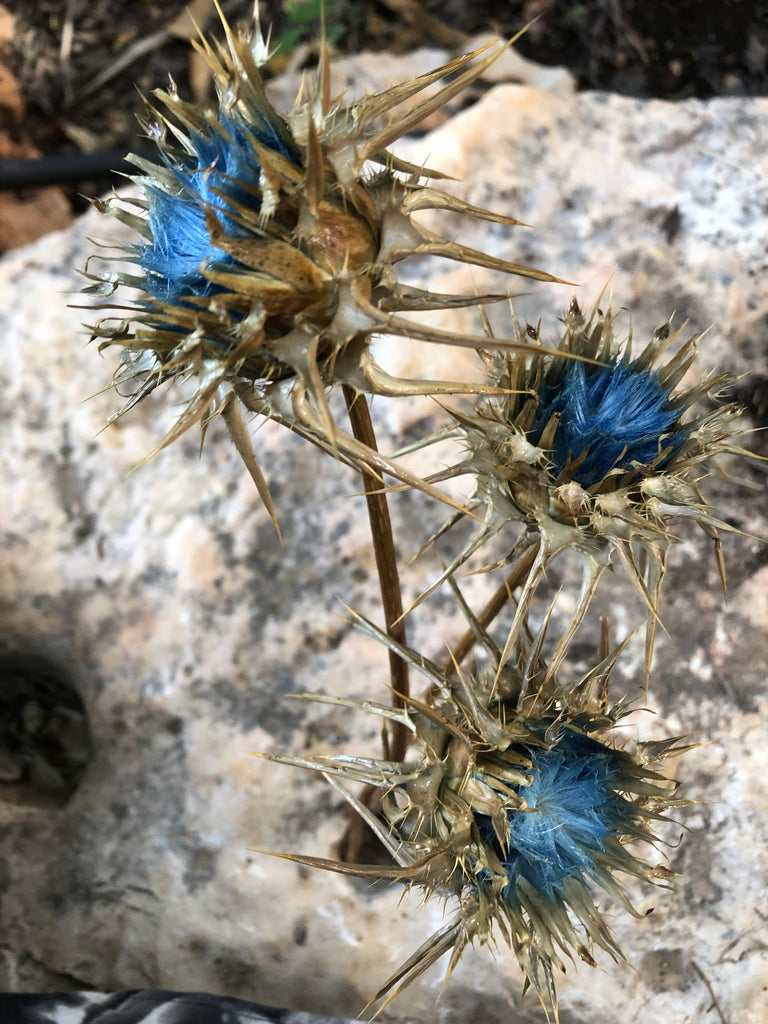Indigo Flower

Indigo is a mystery: an elusive colour that hides in several plants across the world. The preparation of indigo is like an ancient ritual, and one of the telling signs that it worked is a coppery patina and the "Indigo Flower" that forms on top of the surface. The blue indigo flowers pictured above are in fact the dried up fruits of milk thistles that I have dipped into the vat and dyed their fuzzy hairs blue.
Each continent has its own indigotin-bearing plant, and it's amazing how ancient civilizations have unlocked the secret for extracting and dyeing with it. Indigo does not dissolve in water and requires a careful alchemical process before it can be used as a dye. It is the most durable natural dye, and we are all familiar with it through denim, which represents just some of the shades that can be achieved with indigo dye.
I've been dreaming of shibori dyeing with indigo and have finally became confident enough to prepare my own indigo vat. Indigo powder has a peculiar scent that is familiar from henna dyes (they are histoic allies, often used in conjunction for making the paste known as "black henna", and also henna is a natural reaction agent in the indigo vat). I used dates in my own vat, and it smells like milky bubble tea which makes indigo dyeing all the more enjoyable!
Before I even knew anything about Indigo I was inspired to create a perfume by that name. It is an homage to my mother, herself a mystery. The perfume smells like a velvet indigo hug.


